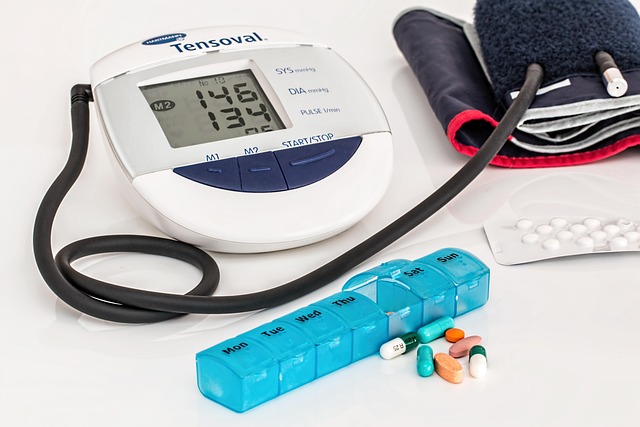Progressive overload is one of the most fundamental principles in weightlifting and strength training. It refers to the gradual increase of stress placed on the body during exercise over time. This concept is essential for continuous improvement, whether your goal is to build muscle, increase strength, enhance endurance, or improve overall fitness. Without progressive overload, progress stalls, and plateaus become inevitable. In this article, we will delve into what progressive overload entails, why it’s critical for success in weightlifting, and how to implement it effectively.
What Is Progressive Overload?
At its core, progressive overload involves challenging your muscles more than they are accustomed to in order to stimulate growth and adaptation. When you lift weights, your muscles experience microscopic tears. During recovery, these tears repair themselves, leading to stronger and larger muscles—a process known as hypertrophy. To keep making gains, you must progressively increase the demands placed on your muscles. If you repeat the same workout with the same weights week after week, your body will adapt initially but eventually stop improving because it no longer perceives the activity as a challenge.
Progressive overload can be achieved through various means, including increasing weight, repetitions, sets, intensity, or even changing exercises. The key is to ensure that the workload evolves consistently to push your limits safely.
Why Progressive Overload Matters
1. Muscle Growth (Hypertrophy)
For muscle growth, progressive overload is non-negotiable. Muscles only grow when they are subjected to greater resistance than they are used to. By systematically increasing the load, you create the necessary stimulus for hypertrophy.
2. Strength Gains
Whether you’re aiming to lift heavier weights or perform functional movements with ease, progressive overload ensures that your nervous system becomes more efficient at recruiting muscle fibers. This translates to increased strength over time.
3. Preventing Plateaus
Without progressive overload, your body reaches a plateau where it adapts to your routine and stops progressing. Introducing incremental challenges keeps your workouts dynamic and effective.
4. Improved Endurance
Progressive overload isn’t just about lifting heavier; it also applies to endurance training. Gradually increasing the number of reps or decreasing rest periods enhances muscular and cardiovascular stamina.
5. Long-Term Progress
By adhering to the principle of progressive overload, you set yourself up for sustainable long-term progress. This approach fosters discipline, consistency, and measurable results.
Ways to Implement Progressive Overload
There are multiple strategies to incorporate progressive overload into your weightlifting routine. Here are some of the most common methods:
1. Increase Weight
The simplest way to apply progressive overload is by adding more weight to your lifts. For example, if you’ve been squatting 100 pounds for three sets of eight reps, try increasing the weight to 105 pounds while maintaining good form.
2. Add More Reps or Sets
If increasing weight isn’t feasible yet, you can add more repetitions or sets to your current exercises. For instance, if you typically do three sets of 10 reps, aim for four sets or increase the reps to 12 per set.
3. Decrease Rest Time
Reducing the amount of rest between sets increases the intensity of your workout. For example, instead of resting for two minutes between sets, cut it down to 90 seconds. This forces your muscles to work harder under fatigue.
4. Improve Form and Technique
Sometimes, progress isn’t about adding weight or reps—it’s about mastering the movement itself. Perfecting your form ensures that you’re engaging the right muscles and minimizing injury risk, which indirectly supports progressive overload.
5. Change Exercises
Switching up your exercises can introduce new challenges to your muscles. For example, swapping barbell squats for goblet squats or lunges targets different areas of the legs, keeping your muscles guessing.
6. Increase Range of Motion
Performing exercises through a fuller range of motion can make them more challenging. For example, performing deep squats instead of partial squats requires greater strength and flexibility.
7. Tempo Training
Slowing down the eccentric (lowering) phase of an exercise increases time under tension, which intensifies the workout. For example, lowering a dumbbell curl for five seconds before lifting it back up adds difficulty without increasing weight.
Common Mistakes to Avoid
While implementing progressive overload, it’s easy to fall into pitfalls that hinder progress or lead to injury. Here are some common mistakes to watch out for:
1. Adding Too Much Too Soon
Rapidly increasing weight or volume can overwhelm your body, leading to poor form, injuries, or burnout. Progress should be gradual and sustainable.
2. Neglecting Recovery
Muscles need adequate rest and nutrition to recover and grow. Overtraining without sufficient recovery sabotages progress and increases the risk of injury.
3. Focusing Only on Weight
Progressive overload isn’t solely about lifting heavier weights. Ignoring other variables like reps, sets, tempo, or technique can limit your overall development.
4. Sacrificing Form for Heavier Lifts
Compromising proper form to lift heavier weights is dangerous and counterproductive. Always prioritize technique over ego-driven lifts.
5. Lack of Tracking
Not recording your workouts makes it difficult to track progress and ensure you’re consistently challenging yourself. Use a journal or app to monitor your lifts and identify areas for improvement.
How to Track Your Progress
Tracking your progress is crucial for staying motivated and ensuring you’re adhering to the principle of progressive overload. Here are some tips for effective tracking:
- Keep a Workout Log: Write down the exercises, weights, reps, and sets for each session. Review your log regularly to plan incremental increases.
- Take Measurements: Track changes in body composition, such as muscle mass and fat percentage, using tools like calipers or DEXA scans.
- Use Apps or Wearables: Fitness apps and wearable devices can help monitor metrics like volume, intensity, and recovery.
- Set Specific Goals: Define clear, measurable objectives, such as increasing your bench press by 10 pounds within a month or completing 20 pull-ups without stopping.
The Role of Nutrition and Recovery
Progressive overload works hand-in-hand with proper nutrition and recovery. To support muscle growth and repair, ensure you’re consuming enough calories, protein, and micronutrients. Aim for a balanced diet rich in lean proteins, complex carbohydrates, healthy fats, and plenty of fruits and vegetables.
Equally important is allowing your body adequate rest. Sleep plays a vital role in recovery, as does incorporating active recovery days into your routine. Stretching, foam rolling, and mobility work can also aid in preventing injuries and enhancing performance.









